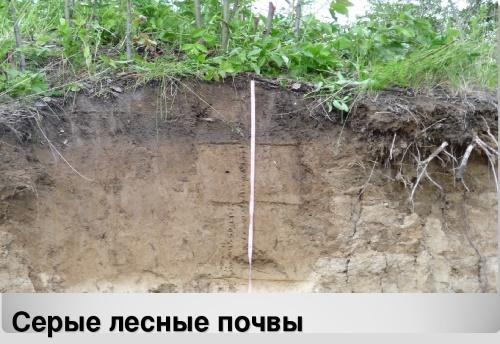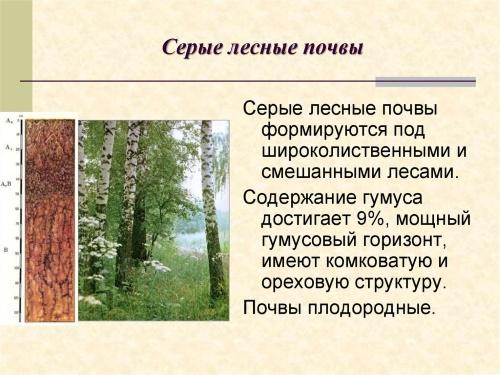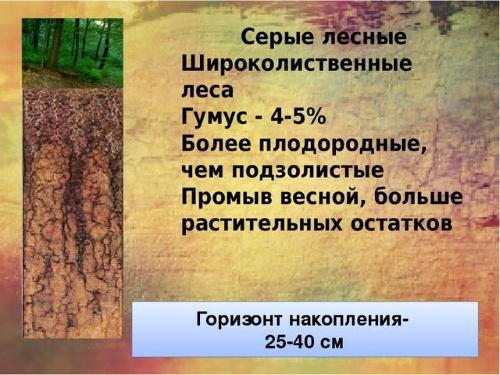Humus content in gray forest soils
 For the agro-industrial region, gray forest soils are of great importance, especially with a shortage of black soil. At the same time, the humus content in gray forest soils plays an important role. After all, fertility depends on him. The yield indicators are influenced not only by the structure, but also by the composition of the soil, in particular, the content of humus in it. The increased amount of organic components makes gray soils suitable not only for use as pastures, pastures and hayfields. The fertility of such lands plays a huge role in agriculture and horticulture. Both agricultural and fruit crops are grown on them.
For the agro-industrial region, gray forest soils are of great importance, especially with a shortage of black soil. At the same time, the humus content in gray forest soils plays an important role. After all, fertility depends on him. The yield indicators are influenced not only by the structure, but also by the composition of the soil, in particular, the content of humus in it. The increased amount of organic components makes gray soils suitable not only for use as pastures, pastures and hayfields. The fertility of such lands plays a huge role in agriculture and horticulture. Both agricultural and fruit crops are grown on them.
What are such soils

Gray soils are formed under forests and grasses. Leaves and herbaceous plants die off to form humus. Under the influence of moisture, it penetrates into the lower soil layers and increases their fertility. Gray soils are located in the forest-steppe zone, bordering on forest and steppe regions.
There are three types of soils:
- light gray.
- gray.
- dark gray.
Humus content in gray forest soils
 Gray forest soils are second only to black soil in terms of fertility. However, the thickness of the humus layer depends on the thickness and location of the soil layer. The lower it is, the more organic matter it has. If translated into numbers, then for each type of gray soil its own percentage of humus:
Gray forest soils are second only to black soil in terms of fertility. However, the thickness of the humus layer depends on the thickness and location of the soil layer. The lower it is, the more organic matter it has. If translated into numbers, then for each type of gray soil its own percentage of humus:
- Least fertile topmost layer, light gray soils. They contain only 2.34% humus (up to a depth of 13 cm).
- The middle layer is slightly richer in humus, the gray soil is 4.13% (about 9 cm deep).
- The most fertile is the bottom layer, the dark gray soil. It contains 6.43% humus up to 10 cm deep.